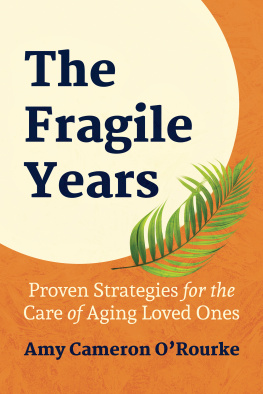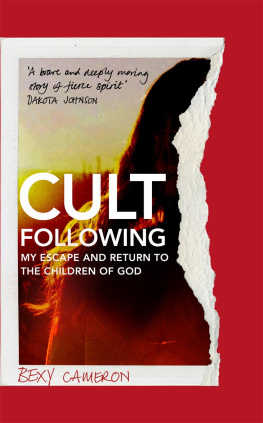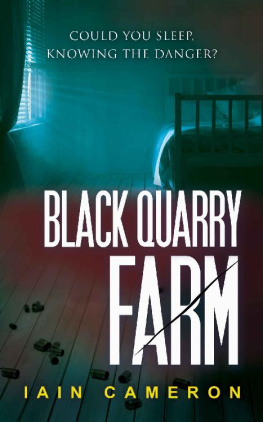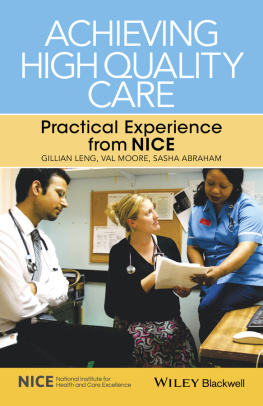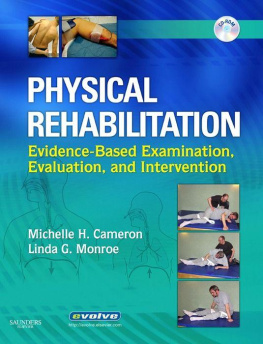Achieving Positive Outcomes for Children in Care
A Lucky Duck Book
Achieving Positive Outcomes for Children in Care
R.J. (Sen) Cameron and Colin Maginn
R.J. (Sen) Cameron and Colin Maginn 2009
First published 2009
Apart from any fair dealing for the purposes of research or private study, or criticism or review, as permitted under the Copyright, Designs and Patents Act 1988, this publication may be reproduced, stored or transmitted in any form, or by any means, only with the prior permission in writing of the publishers, or in the case of reprographic reproduction, in accordance with the terms of licences issued by the Copyright Licensing Agency. Enquiries concerning reproduction outside those terms should be sent to the publishers.
Rights to copy pages marked as handouts, certificates or overhead foils are extended to the purchaser of the publication for his/her use.
The right of the Authors to be indentified as Authors of this work has been asserted by them in accordance with the Copyright, Design and Patents Act 1988.
SAGE Publications
1 Olivers Yard
55 City road
London EC1Y 1SP
SAGE Publications Inc.
2455 Teller Road
Thousand Oaks, California 91320
SAGE Publications India Pvt Ltd
B 1/I 1 Mohan Cooperative Industrial Area
Mathura Road, New Delhi 110 044
SAGE Publications Asia-Pacific Pte Ltd
33 Pekin Street #02-01
Far East Square
Singapore 048763
Library of Congress Control Number: 2009929032
British Library Cataloguing in Publication data
A catalogue record for this book is available from the British Library
ISBN 978-1-84787-448-1
ISBN 978-1-84787-449-8 (pbk)
Typeset by C&M Digitals (P) Ltd, Chennai, India
Printed by MPG Books Group, Bodmin, Cornwall
Printed on paper from sustainable resources
To our parents
Contents
Preface
Why we have written this book
I and the public know
What all school children learn,
Those to whom evil is done
Do evil in return.
(W.H. Auden, 190773)
Tracey was nine but she looked much younger. The tirade of insulting words, punches, kicks and attempts to bite Carole, the senior carer on duty, was recorded as yet another temper tantrum. This was the fourth tantrum that day and it was only lunchtime. Tracey had recently been admitted to our childrens home and as the director, I had met her several times and she always seemed anxious, angry and preoccupied.
This was the early days of the Pillars of Parenting and Tracey was one of the first children to benefit from the approach. Using the methods and theories described in this book, the consultant psychologist had worked with the staff of the childrens home to identify Traceys parenting needs, agree strategies to respond to her pain-based behaviour and to identify and begin to build on her strengths.
About six weeks after we started her carefully worked out support plan, I was sharing a drink and a biscuit with members of staff and a little group of our children when Tracey came bouncing into the kitchen singing: she stopped, looked at me and to the surprise of everyone, she asked Who are you?
By then, Traceys temper tantrums had almost disappeared.She had progressed from defensive, fear-induced anger to beginning to trust adults again, to feel safeand to explore her surroundings. Six weeks earlier, her world view had been constricted by fear, in her frightened and angry state, she could see no further than her immediate perceived needs. Now having experienced the right kind of support from the staff, she felt safe enough to explore, and it was in this expanded world that she saw me for the first time.
Although seeing Traceys new-found joy and pleasure with life still fills me with pride, we wont mention her again, but this book was written for her and the many traumatised children like her. The approach described in the following pages calls for clarity of roles for the many people caring for looked-after children. It sets out to empower those working with the children on a 24/7 basis, with the knowledge and skills to understand the complexity of their task. Our Authentic Warmth model of childcare requires clear and strong leadership from those responsible for organising services to children in public care and demands a high level of purposeful kindness and commitment from the carers who look after them every day. Most of all, it calls for a child-centred approach that is informed by the best knowledge psychology has to offer.
| Colin Maginn and R.J. (Sen) Cameron | April 2009 |
List of Figures and Tables
Figures
Tables
About the Authors
 Dr R.J. (Sen) Cameron
Dr R.J. (Sen) Cameron is founder and now Co-Director of the Professional Doctorate in Educational Psychology at University College London. He is also a private consultant in child and educational psychology.
His publication record is considerable, having written or edited five books and published more than 50 journal articles on a variety of topics including the management of behaviour at home and school, promoting organisational change in schools, working with the parents of young children who have severe developmental delay, and supporting residential and foster carers responsible for vulnerable children and young people.
In 2004 he was given the British Psychological Societys national award for distinguished contributions to the teaching of psychology.
 Colin Maginn
Colin Maginn has worked with looked-after children in a variety of settings, including two separate secure units. Colin has a passion for excellence in childcare and is on a mission to improve the lives of vulnerable children and young people!
He believes that this important life-changing work is under-valued and is working to transform both how carers are viewed and what they do. To achieve this, working with Sen Cameron, they have developed a new model of professional childcare and have formed a social enterprise to work with foster carers and residential care staff. The approach is based on the concept of Authentic Warmth and involves supporting and teaching carers to provide a highly sophisticated type of professional parenting, which meets the psychological needs of children who have been rejected, neglected and abused, and which also provides support for the young peoples emotional adaptation.
Acknowledgements
Both authors would like to acknowledge, with sincere thanks, the important contributions of the residential care staff from the two London childrens homes in which the Authentic Warmth model of professional childcare was first developed.
The encouragement and support of Katie Metzler, commissioning editor at SAGE and Barbara Maines, project consultant, are also gratefully acknowledged.
Professional Childcare: When?
The supreme happiness of life is the conviction that we are loved.
(Victor Hugo, French novelist, 180285)
What makes a child carer a professional? Is it that they possess specialist knowledge and skills? Or is it just the fact that they are paid to look after other peoples children? Our motivation for writing this book stems from our vision that, some day, the answer to this question will be an emphatic statement that includes the words a highly specialised knowledge of childrens developmental needs, combined with effective therapeutic skills. To reach this point in professional development, we would have to ensure that the knowledge and skills of carers can be effective, evidence based, flexible, dynamic (as opposed to static), drawing heavily on the knowledge-base of psychology, and not intimidated by our risk-averse legal system or frozen by political correctness.





